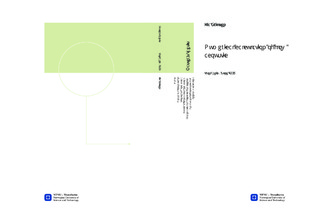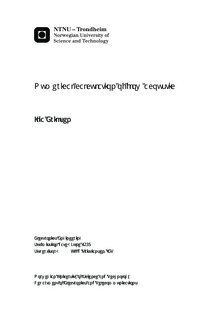| dc.contributor.advisor | Kristiansen, Ulf R | nb_NO |
| dc.contributor.author | Eriksen, Ilja | nb_NO |
| dc.date.accessioned | 2014-12-19T13:48:37Z | |
| dc.date.accessioned | 2015-12-22T11:48:19Z | |
| dc.date.available | 2014-12-19T13:48:37Z | |
| dc.date.available | 2015-12-22T11:48:19Z | |
| dc.date.created | 2013-09-19 | nb_NO |
| dc.date.issued | 2013 | nb_NO |
| dc.identifier | 649666 | nb_NO |
| dc.identifier.uri | http://hdl.handle.net/11250/2370794 | |
| dc.description.abstract | Yelling and vibration are large problems discovered by natural gas transport in the North Sea. It is believed these problems occur in flexible pipes that are used to transport natural gas. The flexible risers often called by the phenomenon singing risers. Pressure oscillations generated in the pipe and can be heard as acoustic tones. There is still working with research around this. There are solutions to reduce unwanted vibration and yelling, but they are not entirely satisfactory. One of the solutions is to reduce the speed of the gas. This solution will lead to large expenses since speed will be very low. Until now is several researchers investigating singing riser by experiments and simulations.A pipe with a cavity was studied in this paper. The problem itself was divided into several part tasks where it was taken into use simulations and experiments. The purpose of the thesis was to model a practical setup. The simulations were performed using the software Palabos, which was used in previous investigations in flow context for acoustics. It was studied the effect of changing cavity height in a tube. In the simulation was spent new version of the pipe model, a pipe with dampers. The simulation results led to model has some errors. There was not enough time to explain these errors, so it had to be used an older version of the pipe model. Resonance frequency was found out to each cavity height. Results showed that by changing the cavity height did not change the resonance frequency. Just a length of cavity affected the resonance frequency. The largest cavity height gave the highest whistling sound. Cancelation of a normal mode with the help of the applied frequency was possible. It may have some milliwatts of applied frequency to cancels normal mode. An acoustic hysteresis was found, but a good explanation of why it was formed was not found. | nb_NO |
| dc.language | eng | nb_NO |
| dc.publisher | Institutt for elektronikk og telekommunikasjon | nb_NO |
| dc.title | Numerical calculation of flow acoustic | nb_NO |
| dc.type | Master thesis | nb_NO |
| dc.source.pagenumber | 76 | nb_NO |
| dc.contributor.department | Norges teknisk-naturvitenskapelige universitet, Fakultet for informasjonsteknologi, matematikk og elektroteknikk, Institutt for elektronikk og telekommunikasjon | nb_NO |

